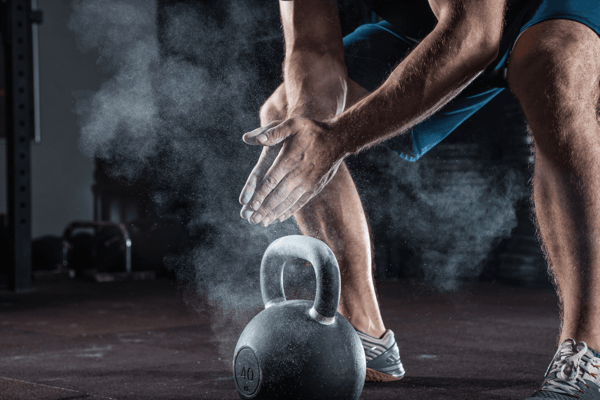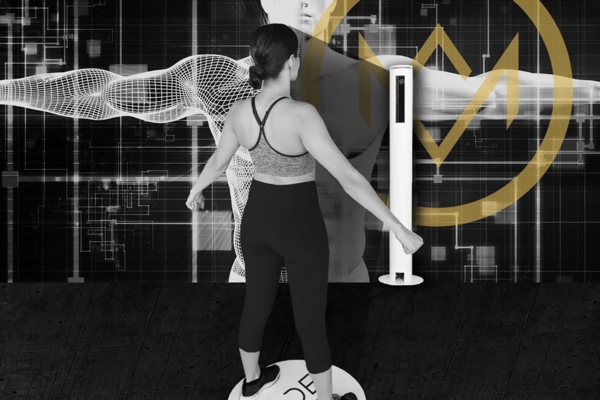Clients come to your gym looking for one thing — results. Whether it's making it through that 5K or keeping up with an energetic toddler, everyone brings a unique goal to the gym.
As a fitness manager, you make each of these goals a priority. You know that helping your clients reach their next fitness milestone will build brand loyalty and customer satisfaction.
One of the best ways to measure progress at the gym is through a fitness assessment. This test tracks fitness changes over time.
Most tests use several metrics. These might include body mass index (BMI) or heart rate during a tough cardio session.
Keeping track of your clients' fitness shows them how invested you are in their fitness journey. This brings up an important question. Who should be carrying out these assessments for your clients?
This article will look at the different roles of fitness managers and personal trainers. After this, we will consider what goes into a fitness assessment.
Keep reading to find out more about this exciting topic, and how Styku's innovative technology can take your facility to the next level.

What Does a Fitness Manager Do?
First, let's take a look at the dynamic position of fitness manager. This role is one of the most challenging at any fitness center. Fitness managers must commit their time to both fitness and administrative work.
Many gyms look for managers with an academic background in health and fitness. They might hire someone with a degree in exercise science, for example. They might prioritize candidates with a background playing sports.
Fitness managers wear many hats. Because they work with many clients, customer service skills are a must.
Managers also oversee the work of other staff members like personal trainers or maintenance crews. Fitness managers need strong people skills to maximize their effectiveness as leaders.
When they are not managing staff or working with clients, managers are likely to complete administrative tasks. These can range from filling out new-client paperwork to purchasing top-tier gym equipment.
Here are some common tasks that fitness managers perform:
- Coming up with (and maintaining) a gym budget
- Making sure staff are following corporate guidelines
- Expediting clear communication
- Increasing gym sales via marketing
- Hiring and training new staff members
- Handling any customer complaints
As you can see, the role of a fitness manager is complex. A manager could face a variety of challenges on any given day. Effective managers are ready for anything, and they always put their clients first.

The Role of a Personal Trainer
One advantage of being a personal trainer is that you get to spend plenty of one-on-one time with gym clients. This makes it easier for you to track your clients' progress and give personalized feedback.
Similar to the position of fitness manager, the role of a personal trainer is very dynamic. Job duties range from giving nutritional advice to measuring progress with different fitness metrics.
To become a personal trainer, you need to be familiar with a wide range of fitness programs. Many gyms also require certifications for their trainers.
Personal trainers are trained to provide CPR and first aid in case of emergency. They also need excellent motivational skills. A good personal trainer encourages clients to meet their goals every step of the way.
Here are a few important tasks that personal trainers perform:
- Training clients on the proper use of gym equipment
- Working with group classes and individuals
- Building trust with new clients
- Marketing gym products or packages
- Tracking clients' fitness over time
- Boosting clients' confidence
An effective personal trainer considers many different aspects of their clients' health. They know that each gym-goer needs a unique wellness plan.
Personal trainers are passionate about guiding others along their fitness journies. The right personal trainer can revolutionize the gym experience.
A Fitness Assessment Primer
The fitness assessment has been transformed in recent years. In the past, these assessments centered around specific fitness goals. Assessors might record mile times or count how many push-ups a client can do.
The current fitness landscape is more focused on the idea of holistic well-being. This idea prioritizes the overall well-being of the client. As a result, assessments have become much more dynamic.
Let's take a look at a few of the areas most fitness assessments measure today.

Preliminary Health Assessment
Before the assessment begins, clients need an overall health assessment. This determines whether they are fit enough to carry out the required fitness tests.
This initial assessment will examine different health metrics. It will determine whether the client has underlying health conditions or takes any prescription medications.
The client will also discuss any history of smoking or heart problems. All of these factors can put a client at risk during the assessment. By examining your client's overall fitness, you can prevent negative outcomes.
During this assessment, you will also record your client's height, weight, and resting heart rate. If these fitness metrics are within the normal range, then the client can move on to the other parts of the fitness assessment.

Testing Cardiovascular Endurance
Heart disease has been a leading cause of death for decades. Improving your cardiovascular endurance can help keep your heart healthy for years to come.
Perhaps the most common test of cardiovascular endurance includes running. You might time your client running sprints on a treadmill. Or you might record their time for a longer run.
For clients with knee or back problems, the stationary bike is another great option for this assessment. Remember, fitness looks different for everyone!

Evaluating Overall Strength and Endurance
When you test muscle endurance, you are trying to figure out how long a muscle can work before it gets fatigued. For this assessment, it's common to assign push-up and balancing tests.
This fitness test might also include ab exercises, pull-ups, and the bench press. After this assessment, you'll compare your client's results to standard metrics.
Keep in mind that the ideal number of push-ups or sit-ups is different for everyone. Before you start this test, you should have a good sense of your client's unique fitness goals and abilities.

Analyzing Body Composition
Body composition tells you more about fitness than a number on the scale. This metric analyzes how much of the body is made up of fat.
Some fitness professionals use a waist-to-hip ratio to estimate body composition. Others measure a fold of skin with calipers, or they use underwater weighing techniques.
Styku's 3D scanning technology offers a novel method for measuring body composition. 3D scanning is affordable and non-invasive. It can predict fat mass, lean muscle mass, bone mass, and many other fitness metrics.
As you can see, the fitness assessment requires in-depth knowledge of your client's physical abilities and fitness goals. Because of this, many fitness center owners assign these assessments to personal trainers.
A personal trainer is already familiar with a client's overall health and fitness. Trainers can make informed decisions about the assessment procedure.
However, new technologies like Styku's 3D scanning make it easy for anyone to assess fitness. Let's learn more about how you can make 3D scanning work for you!

How 3D Scanning Can Help
Investing in new tech for your gym is a smart way to engage current and potential clients. In today's challenging market, innovative technology can set your fitness center apart.
To get started, invite new clients to an initial 3D scanning appointment. After this appointment, you can go over the results with your client.
Styku's 3D scanners rapidly analyze hundreds of body measurements. Your clients can see exactly what they need to focus on to achieve their fitness goals.
First, you will take your client through an initial scanning assessment. You can then walk them through potential risks and personal goals. 3D scanning allows you to track your client's progress over time.
3D scanning is a simple process that any trained staff member can carry out. The Styku model completes its scan in under 40 seconds.
Finally, the scanning device also produces automated reports. Clients can view these reports at any time. They can receive regular report updates as they continue their fitness progress.
3D scanning is an excellent addition to any fitness assessment. Fitness managers and personal trainers can both use the equipment. This new tech is sure to improve your client's gym experience.
Invest in Your Future Today
If you're looking to stay ahead in the global wellness economy, Styku is here to help! Our top-tier equipment makes a great addition to any fitness assessment.
Our team of experts is standing by to help fitness aficionados just like you take their facility to the next level.
Ready to take this exciting step? Then give us a call today! We look forward to helping you support your clients across each fitness milestone.






